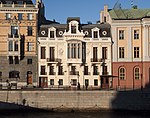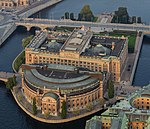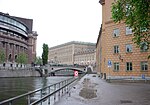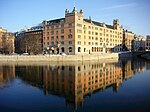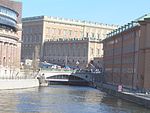Riksbron
Bridges completed in 1907Bridges completed in 1931Bridges in StockholmPedestrian bridges in Sweden
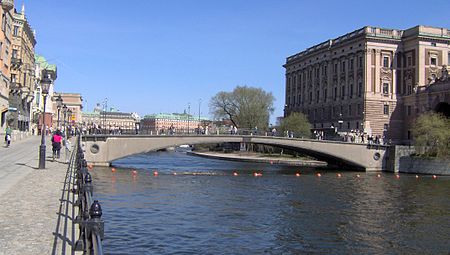
Riksbron (Swedish: "The National Bridge" or "The State Bridge") is an arch bridge in central Stockholm, Sweden leading from Drottninggatan on Norrmalm 44 metres (144 ft) over to Riksgatan on Helgeandsholmen. The name is derived from the bridge's proximity to several buildings of national importance, including Riksdagen, the Parliament Building; Rosenbad, the Prime Minister's Office and the Government Chancellery; and the Sager House, official residence of the Prime Minister. Nearby bridges include Stallbron, Norrbro, and Vasabron.
Excerpt from the Wikipedia article Riksbron (License: CC BY-SA 3.0, Authors, Images).Riksbron
Strömgatan, Stockholm Norrmalm (Norrmalms stadsdelsområde)
Geographical coordinates (GPS) Address External links Nearby Places Show on map
Geographical coordinates (GPS)
| Latitude | Longitude |
|---|---|
| N 59.328222222222 ° | E 18.067055555556 ° |
Address
Riksbron
Strömgatan
103 21 Stockholm, Norrmalm (Norrmalms stadsdelsområde)
Sweden
Open on Google Maps

